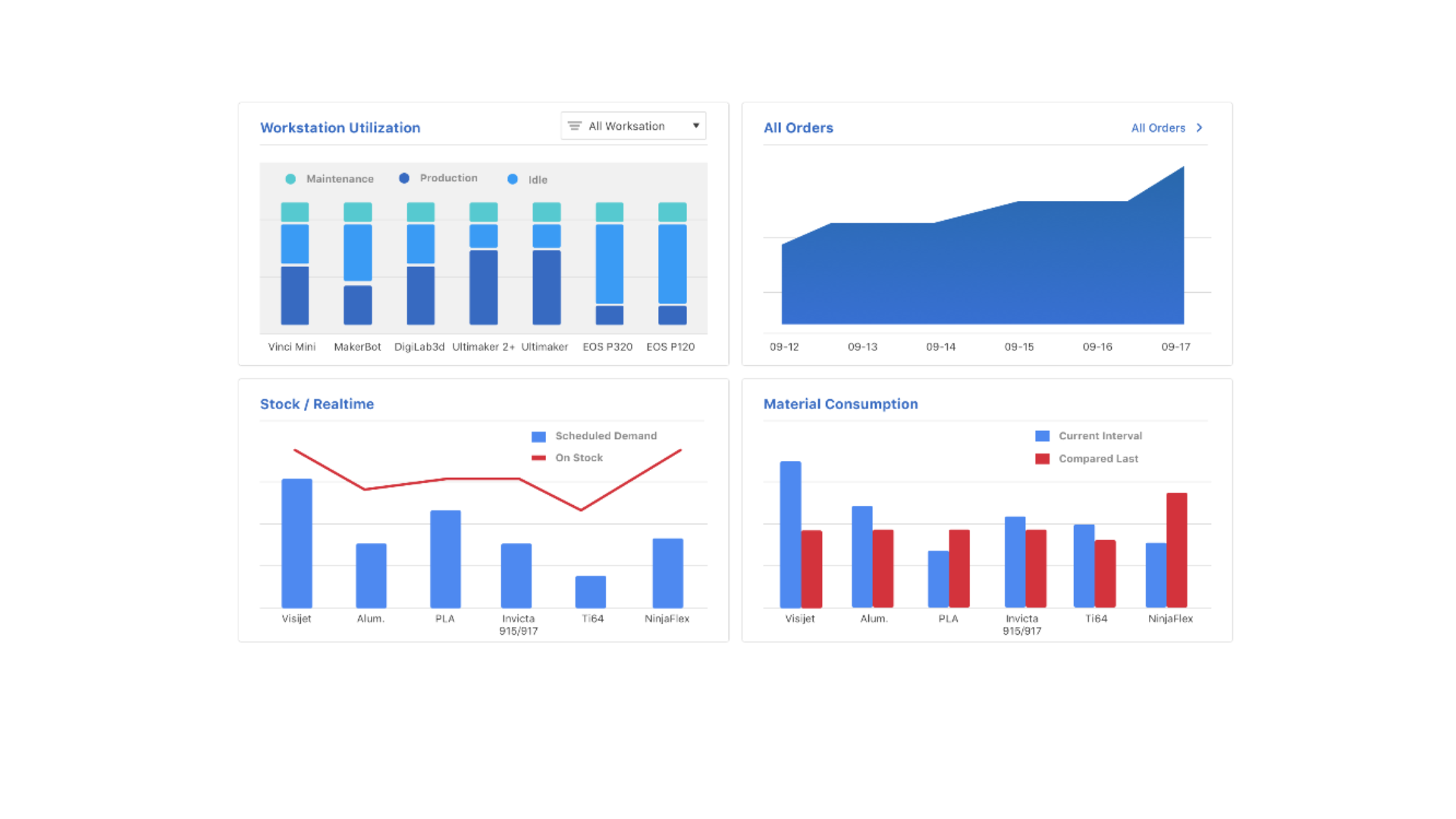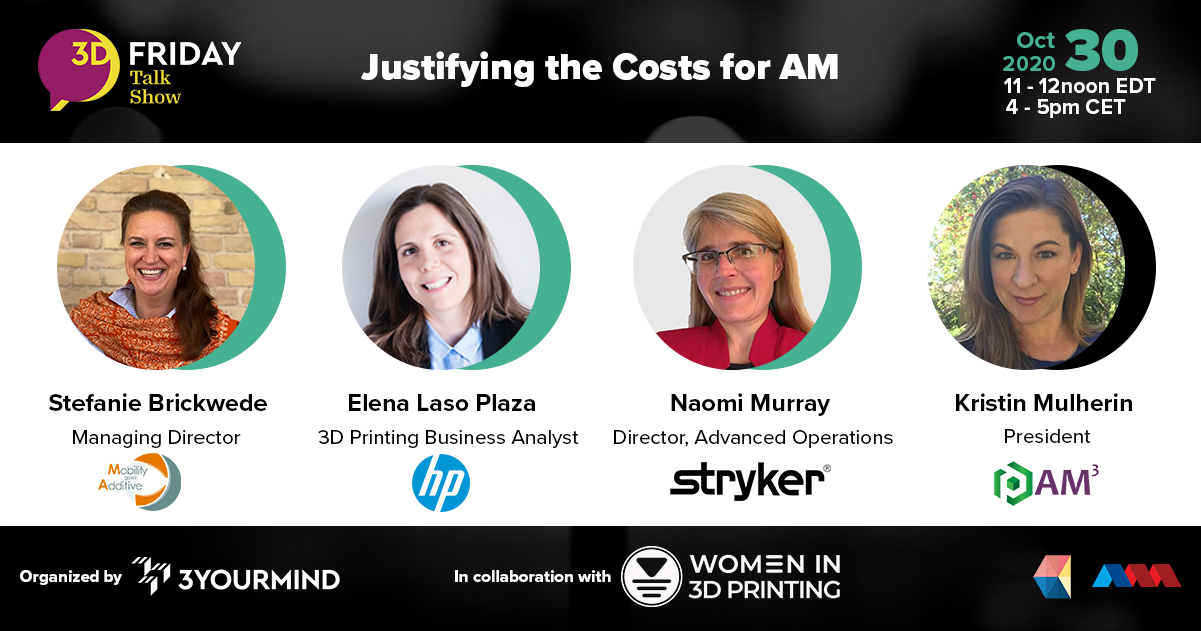The value-added benefits of additive manufacturing (AM) in comparison to traditional methods are already well known. Reduced costs and shortened lead times, coupled with greater design freedom and the ability to print more complex parts, are all factors driving the take-up of AM by businesses across sectors ranging from automotive to medical, aerospace to fashion, and maritime to food, to name just a few.
Yet, how can you quantify the benefits 3D printing delivers for your business and ensure you are optimizing the Return On Investment (ROI) of your AM processes? According to a report by 3D printing service Scultpeo, budget remains the biggest barrier to adopting and expanding AM operations.

In this month’s 3D Friday Talk Show, AM enterprise software developer 3YOURMIND will bring together experts from across the AM sector to answer this question, discussing the key performance indicators (KPIs) businesses can utilize to track and improve their AM profitability.
“We know data is the new currency, and by making real-time evaluations visible, AM facilities have the framework they need to make the best decisions for increasing profits,” said Stephan Kühr, CEO and founder of 3YOURMIND.
The firm has organized the upcoming edition of 3D Friday Talk Show to discuss the following KPIs businesses should consider when looking to increase the profitability of their AM operations. According to 3YOURMIND, customer management, workstation utilization, material management, and cost predictions are all metrics through which Industrial companies and service bureaus can achieve this, and will be discussed in depth during the webinar.
Customer management
Fundamental to running an efficient, profitable AM business is customer management. Gaining an informed understanding of their customers’ behaviors will better enable firms to adapt to their specific requirements. Access to accurate data, therefore, is key to establishing realistic growth goals and measuring the performance and value of ongoing projects.
To this end, AM profitability can be enhanced through customer management by tracking order cycle times, individual orders per customer, the type of customer they are, and the average value of their orders. Analyzing this data can enable AM firms to better understand the behaviors of their customers, and how best to serve them. In turn, this provides indicators as to where profitability can be improved on a customer-by-customer basis.

Workstation utilization and material management
Another important consideration when maximizing profitability is workstation utilization, in short, how efficiently managed is your workstation? Key to this is making sure 3D printers are operating at 100% capacity to reduce downtime significantly. Continually tracking the maintenance of machines will also allow any problems that arise to be solved quickly, further reducing downtime and unforeseen pausing of jobs. Tracking jobs is also necessary to be able to successfully print various parts for different customers at the same time, boosting operational efficiency and, therefore, profitability.
In a similar vein, the ability to efficiently manage the materials used within orders could significantly boost profitability. Accurate predictions of how much material will be needed for each job helps to reduce waste and unnecessary overuse of expensive feedstock. Meanwhile, re-using leftover materials such as powders can also help to reduce waste. Tracking the profitability of the materials used can thus provide significant cost savings while providing indicators as to where the management of materials can be optimized.

Predicting costs
Finally, cost prediction can also be fundamental to operating a profitable AM business. Being able to track the individual components of each job in real-time, and their subsequent costs will provide firms with the real cost of a job as opposed to an expected one. Tracking the order as it is completed and taking into account the costs of any unforeseen hindrances will therefore enable firms to give an accurate fee of what the job has actually cost to complete.
Operational costs can also be lowered by reducing the number of steps in the production process. By implementing 3YOURMIND’s management software, a leading automotive OEM customer was able to reduce the number of steps in the production process from 11 to nine, speeding up the process by 38 minutes. The OEM’s project coordination process was also reduced from nine steps to five, saving eight minutes. In total, these efficiency improvements delivered an estimated $400,000 savings per site each year for the customer.
3D Friday Talk Show: Justifying the costs for AM
This month’s 3D Friday Talk Show will take place on 30 October at 4-5pm CET. This edition of the webinar is organized by 3YOURMIND in collaboration with Women in 3D Printing and is focused on the topic – Justifying the Costs for AM.
The webinar will bring together panelists to explain what’s behind justifying the costs of AM in their own businesses. The panel taps into the knowledge of speakers from various levels of the AM supply chain, including Stefanie Brickwede of Mobility goes Additive, Elena Laso Plaza from HP, Naomi Murray of STRYKER, and AM-Cubed’s Kristin Mulherin who will be on hand to provide the insight and discussion in this month’s edition.
For further information, head over to the 3D Printing Events guide or register for the 3D Friday Talk Show here.

Subscribe to the 3D Printing Industry newsletter for the latest news in additive manufacturing. You can also stay connected by following us on Twitter and liking us on Facebook.
Be sure to subscribe to the Another Dimension podcast on your chosen podcast player to make sure you never miss an episode.
Looking for a career in additive manufacturing? Visit 3D Printing Jobs for a selection of roles in the industry.
Featured image shows The panel includes Stefanie Brickwede of Mobility goes Additive, Elena Laso Plaza from HP, Naomi Murray of STRYKER, and AM-Cubed’s Kristin Mulherin. Image via 3YOURMIND.



